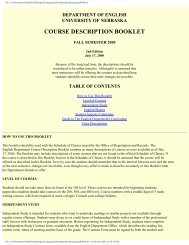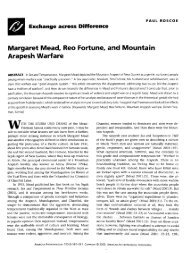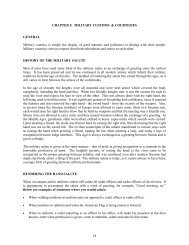Mad About Pyramids
Mad About Pyramids
Mad About Pyramids
You also want an ePaper? Increase the reach of your titles
YUMPU automatically turns print PDFs into web optimized ePapers that Google loves.
CREDIT: MARIO GERUSSI<br />
Human design? The hill that looms over Visoko<br />
resembles a pyramid.<br />
says Harding. But during 4 years of nonstop<br />
shelling, “we nearly lost everyone and everything,”<br />
says Kujundzic-Vejzagic, who fled to<br />
Croatia a year into the conflict.<br />
Archaeological sites were used as defensive<br />
positions in fierce battles, and shattered<br />
windows left the museum vulnerable to winter<br />
weather and animals. The timing could<br />
not have been worse, says Preston Miracle,<br />
an archaeologist at the University of Cambridge,<br />
U.K., who has worked in the region<br />
for 2 decades. Just before the war, he says,<br />
“the senior generation of Bosnian prehistorians<br />
all died,” and the generation in line to<br />
replace them scattered.<br />
Ten years on, the community still has not<br />
recovered, “but at least it is clear what needs to<br />
be done to get us back in shape,” says<br />
Kujundzic-Vejzagic, who returned in 1998<br />
and has remained at her post in Sarajevo. The<br />
first priority is “to assess and protect” the<br />
endangered archaeological riches in the country,<br />
now known as Bosnia and Herzegovina.<br />
This roughly Switzerland-sized territory has<br />
been continuously occupied all the way back<br />
to the last Ice Age and beyond.<br />
Little is known about the first Slavic<br />
tribes that arrived some 1500 years ago, says<br />
Kujundzic-Vejzagic. Even less is known<br />
about the people who preceded them,<br />
the Illyrians, who held sway from around<br />
1300 B.C.E. until the Romans took over.<br />
Learning more about their interactions with<br />
neighboring cultures, especially the Greeks,<br />
would shed light on the technological revolutions<br />
that changed Bronze and Iron Age<br />
Europe. “All of these settlements and graves<br />
are just waiting to be studied,” she says,<br />
although “we’d do better to leave everything<br />
in the ground” until resources are secured to<br />
protect against weather and looters.<br />
Deeper in time, fundamental questions<br />
about Neolithic society have sustained one<br />
of the few remaining international collaborations<br />
in Bosnia. Over the past 4 years, a<br />
team led by Kujundzic-Vejzagic and<br />
Johannes Müller, an archaeologist at the<br />
University of Kiel, Germany, has been<br />
exploring a site near the town of Okoliste, 7 km<br />
away from the pyramid hunt. It has been<br />
identified as part of the Butmir culture, a<br />
source of richly decorated pottery and intricate<br />
statuettes discovered in 1893. Research<br />
on these artifacts and related 7000-year-old<br />
dwelling sites could help answer one of the<br />
central questions of prehistoric archaeology,<br />
says Müller: “How and why did we go from<br />
simple, egalitarian societies of small settle-<br />
ments to complex, hierarchical societies<br />
with big, dense settlements?”<br />
Buried in the soil near Okoliste are the<br />
remains of the largest Neolithic settlement<br />
ever found in Europe: between 200 and<br />
300 houses protected by a ring of three<br />
trenches and a raised bank. “I was astonished<br />
when I realized that this defended area<br />
alone could have been home to as many as<br />
3000 people,” Müller says. Settlements from<br />
contemporary Neolithic cultures in Europe<br />
were occupied by no more than 300.<br />
Another research team, led by Miracle and<br />
Tonko Rajkovaca, a Bosnian archaeologist<br />
also at Cambridge, has just begun looking for<br />
traces of even earlier human occupation in<br />
northern Bosnia; the area is thought to be<br />
one of the last refuges of the Neandertals.<br />
“Despite the richness of this record,” says<br />
Miracle, the region “remains poorly known<br />
and understood.”<br />
With relatively untapped heritage<br />
resources, academic archaeologists say, the<br />
Bosnian government should be trying to help<br />
in any way possible. But instead, many<br />
researchers feel that the country is turning<br />
against them.<br />
When hills become pyramids<br />
If you stand in the right place in Visoko, the<br />
largest of the nearby hills almost looks like a<br />
pyramid. At least, two of its sides are more or<br />
less flat, although the rest is lumpy. During a<br />
tour of the site by Science in June, freshly<br />
dug earthen stairs led up the slope through<br />
the trees, slick with rain. Along the way up,<br />
NEWSFOCUS<br />
broad patches of soil had been cut away and<br />
roped off with yellow tape. A pair of local<br />
guides pointed to the exposed crust of fractured<br />
rock and explained, “This is the side of<br />
the Pyramid of the Sun.” And pointing to two<br />
smaller hills across the valley: “That is the<br />
pyramid of the dragon, and that one is the<br />
pyramid of the moon.”<br />
Osmanagic, who came up with the hills’<br />
mythical names, says he became convinced in<br />
April 2005 that they are buried pyramids,<br />
based on their shape and position. Osmanagic<br />
is in love with pyramids. He says he has studied<br />
“hundreds” of them around the world—<br />
including the Mayan pyramids, which in his<br />
view were located and built with “vibrational”<br />
Big dig. Semir Osmanagic (in hat) and Ivica ˘Sarić, Sarajevo’s minister of culture, with volunteer excavators<br />
at the “pyramid” site. Archaeologists worry that valuable material may be stripped away.<br />
technology inherited from the lost civilizations<br />
of “Atlantis and Lemuria.”<br />
He says he has sought the help of experts<br />
to make “serious scientific argumentation.”<br />
One of the first was Amer Smailbegovic, a<br />
geophysicist who runs a surveying company<br />
and teaches at the International University of<br />
Sarajevo. “I noticed that the area has a peculiar<br />
triangular-sided feature you don’t see too<br />
often in a temperate environment,” says<br />
Smailbegovic, who analyzed satellite<br />
imagery for Osmanagic. Thermal and radar<br />
imaging also made the hill seem “out of the<br />
ordinary,” he says. So Smailbegovic wrote to<br />
Osmanagic that “there are anomalies present<br />
in your area of interest, and you may have<br />
something there. I suggest you find yourself<br />
an archaeologist and geologist to help you<br />
validate the area.” But “the next thing I<br />
know,” Smailbegovic says, “there was a<br />
www.sciencemag.org SCIENCE VOL 313 22 SEPTEMBER 2006 1719<br />
Published by AAAS<br />
on October 10, 2007<br />
www.sciencemag.org<br />
Downloaded from
















